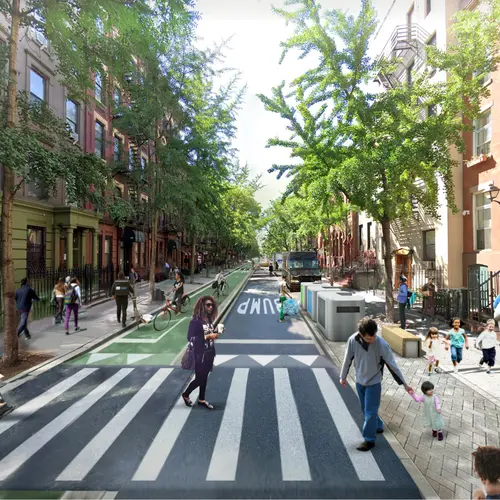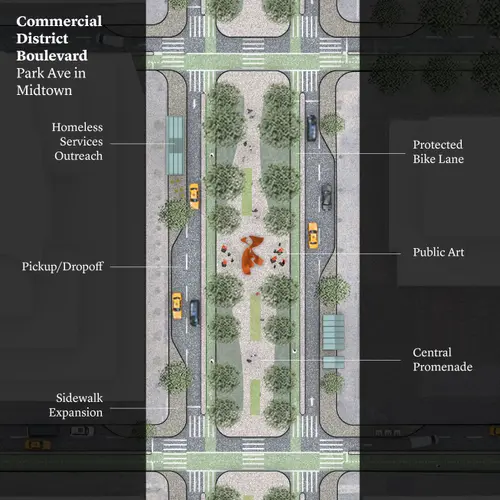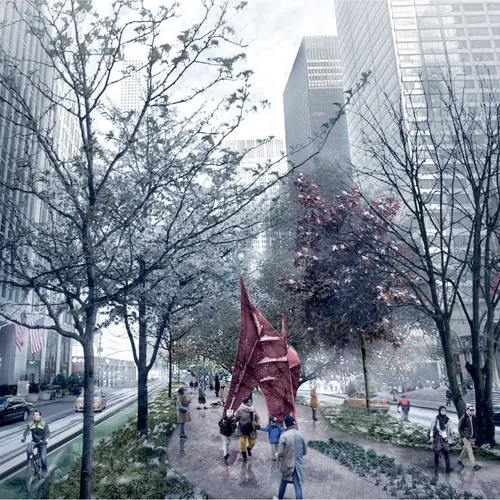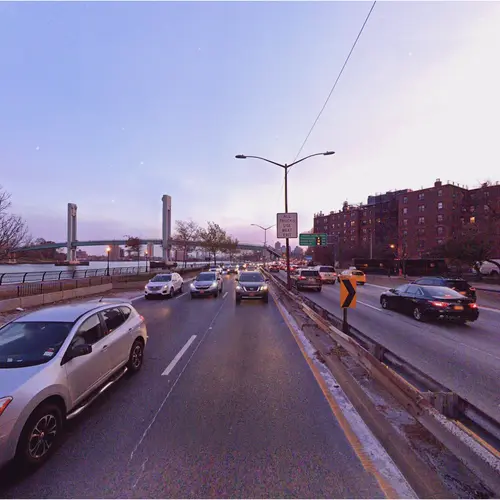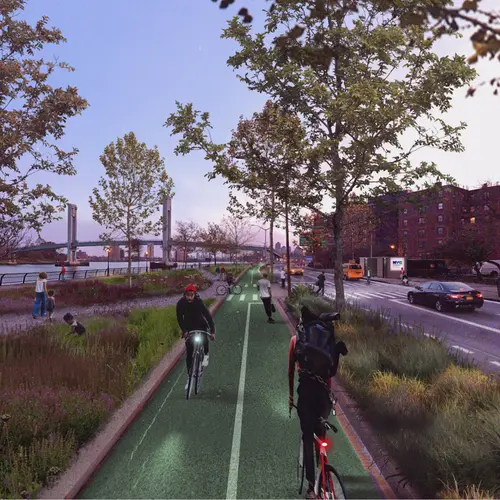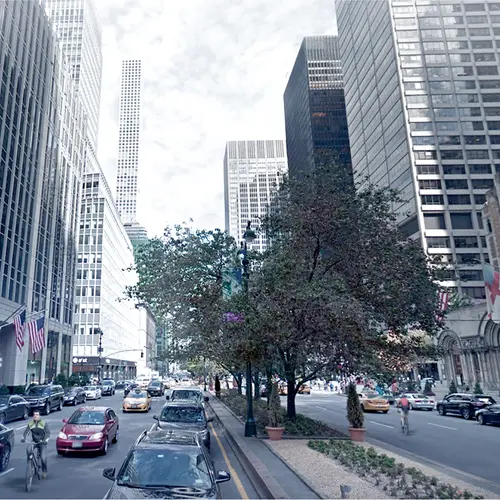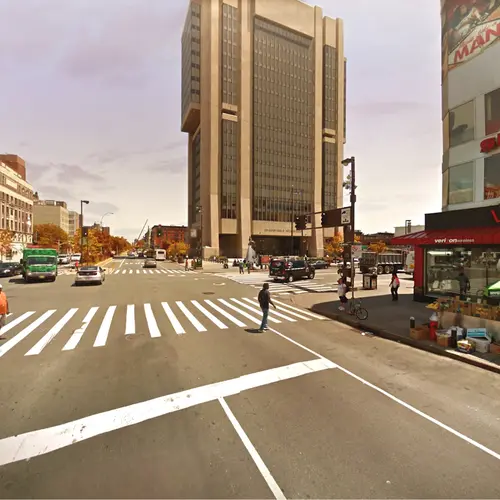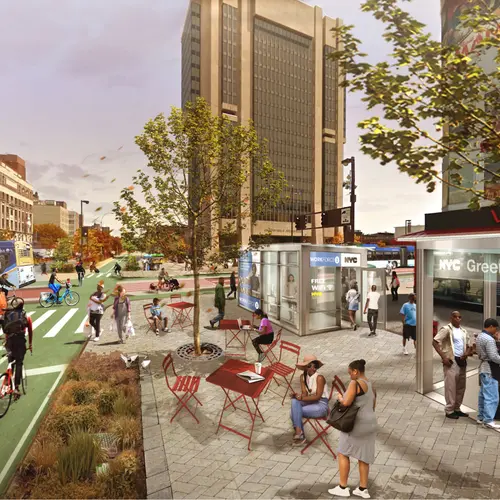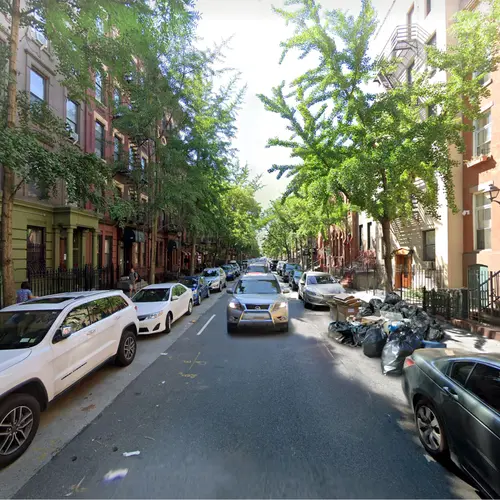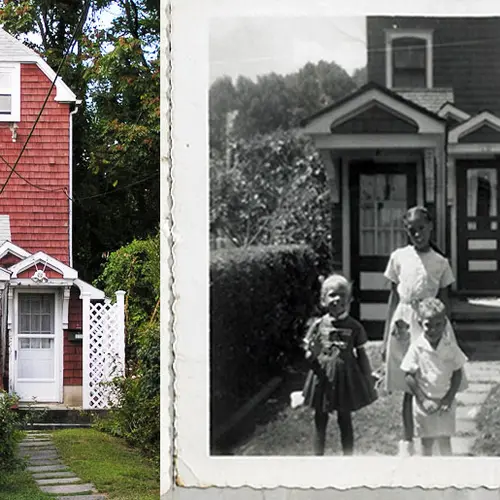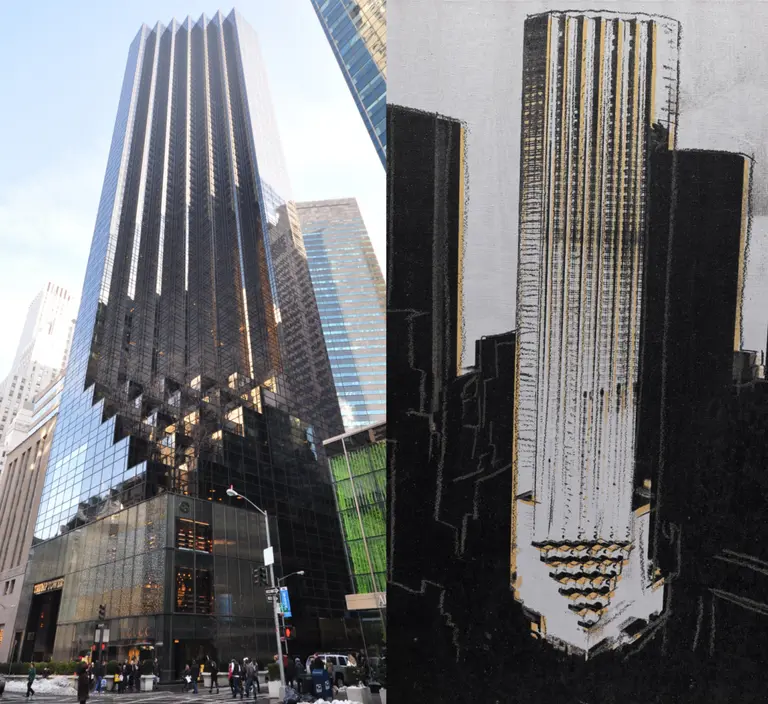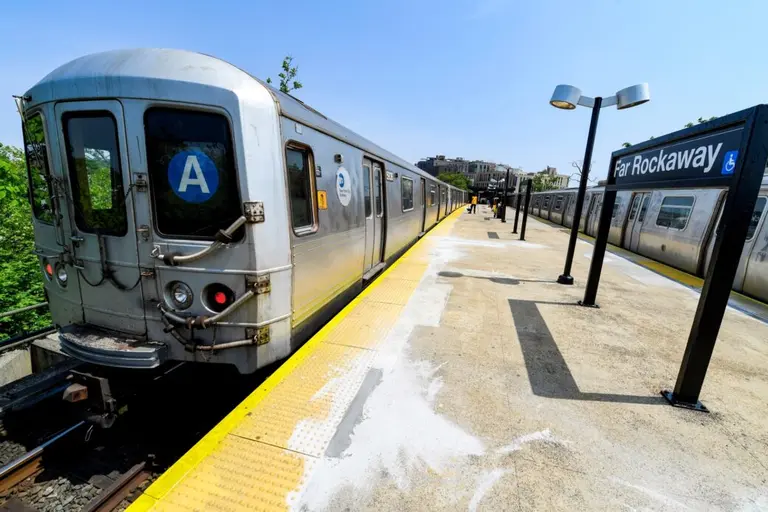Here’s what a car-free, pedestrian-friendly NYC could look like
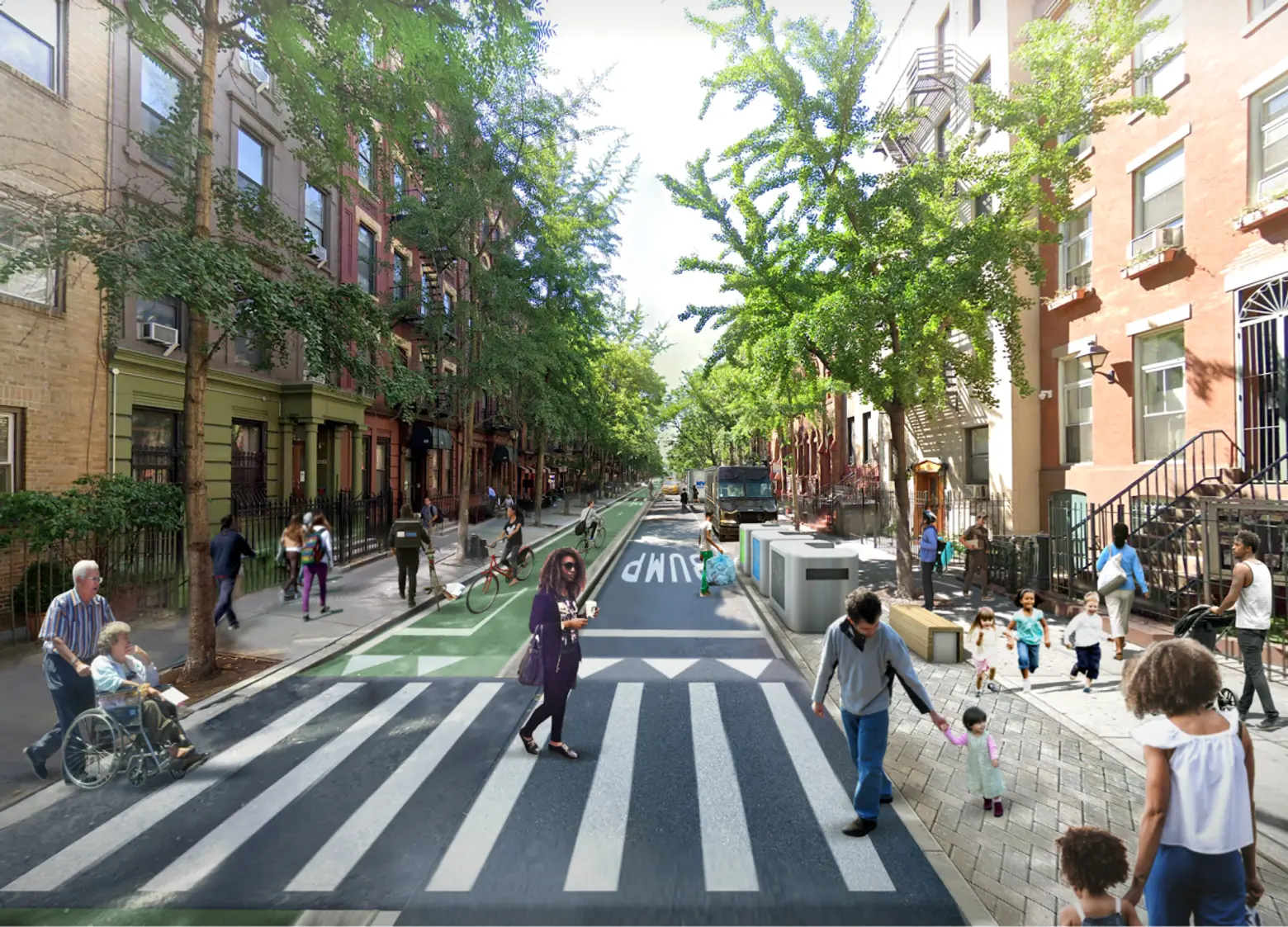
If parking was removed and private cars banned on West 45th Street; courtesy of PAU
In a city that currently has the most streets closed to cars in the country, with plans in store to add more designated busways and charge vehicles entering its busiest streets, is New York ready to be car-free? Architect Vishaan Chakrabarti and his firm Practice for Architecture and Urbanism think so. The New York Times took a look at PAU’s plan, “N.Y.C. (Not Your Car),” which calls for a ban of private motor vehicles in Manhattan and an expansion of sidewalks and pedestrian-only space.
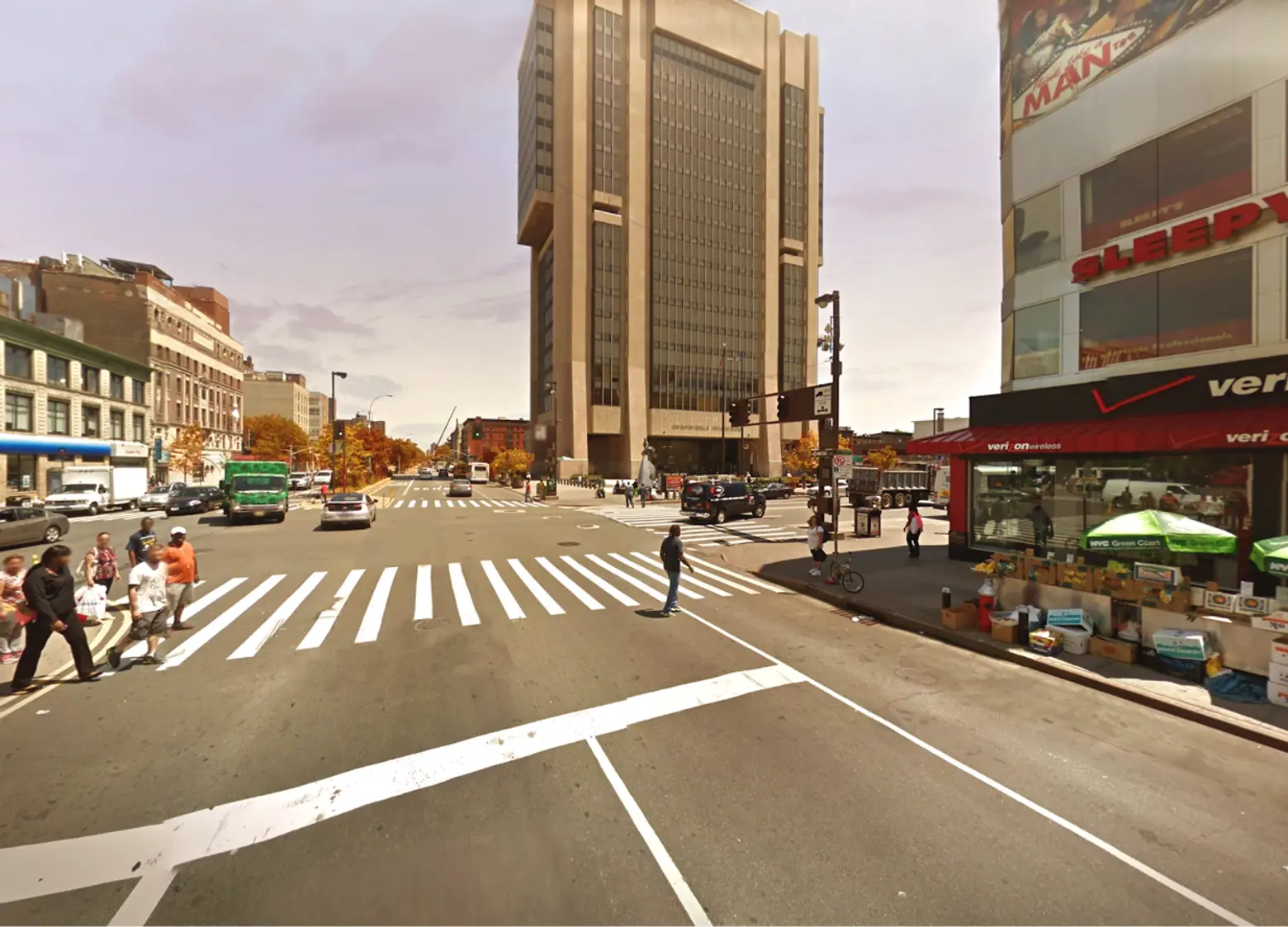
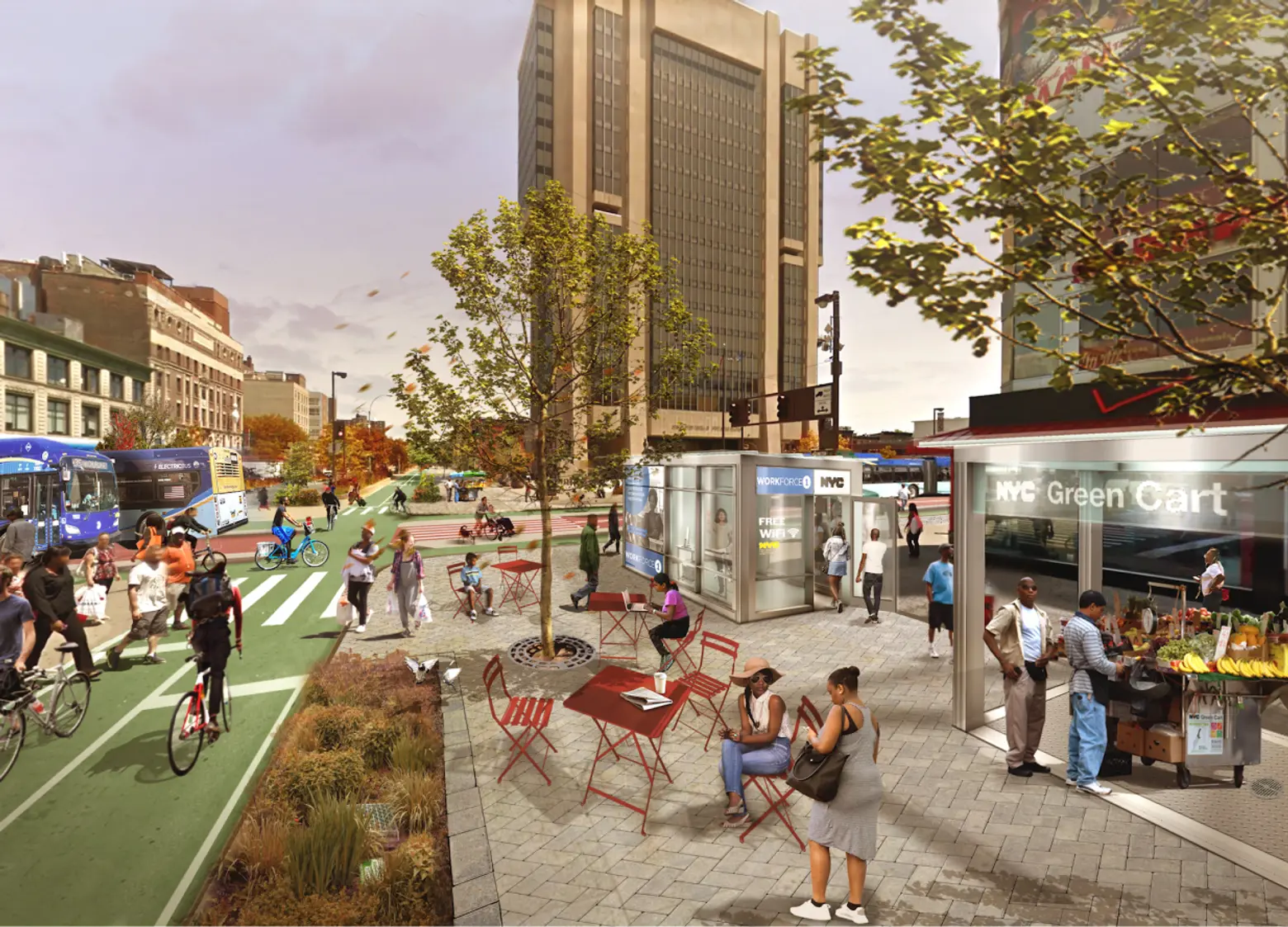
Before and after pedestrianizing Adam Clayton Powell Jr. Boulevard at 125th Street; rendering courtesy of PAU
The proposal comes as New York and other cities start to reexamine the importance of safe public space as a result of the coronavirus pandemic. PAU believes a post-COVID-19 future should be less car-dependent, leading to cleaner air and fewer deaths from vehicles, according to the firm. According to the firm, more than 30 percent of land in New York City is dedicated to roads despite more than 85 percent of New Yorkers not owning private cars.
Focusing on Manhattan, which is already predominately car-free, Chakrabarti and PAU, along with consulting firm Buro Happold, propose getting rid of private vehicle traffic and on-street parking, which could be replaced with additional bike lanes and designated lanes for public transit. Taxis, buses, emergency vehicles, Access-A-Ride, and ride-share services like Uber would be permitted.
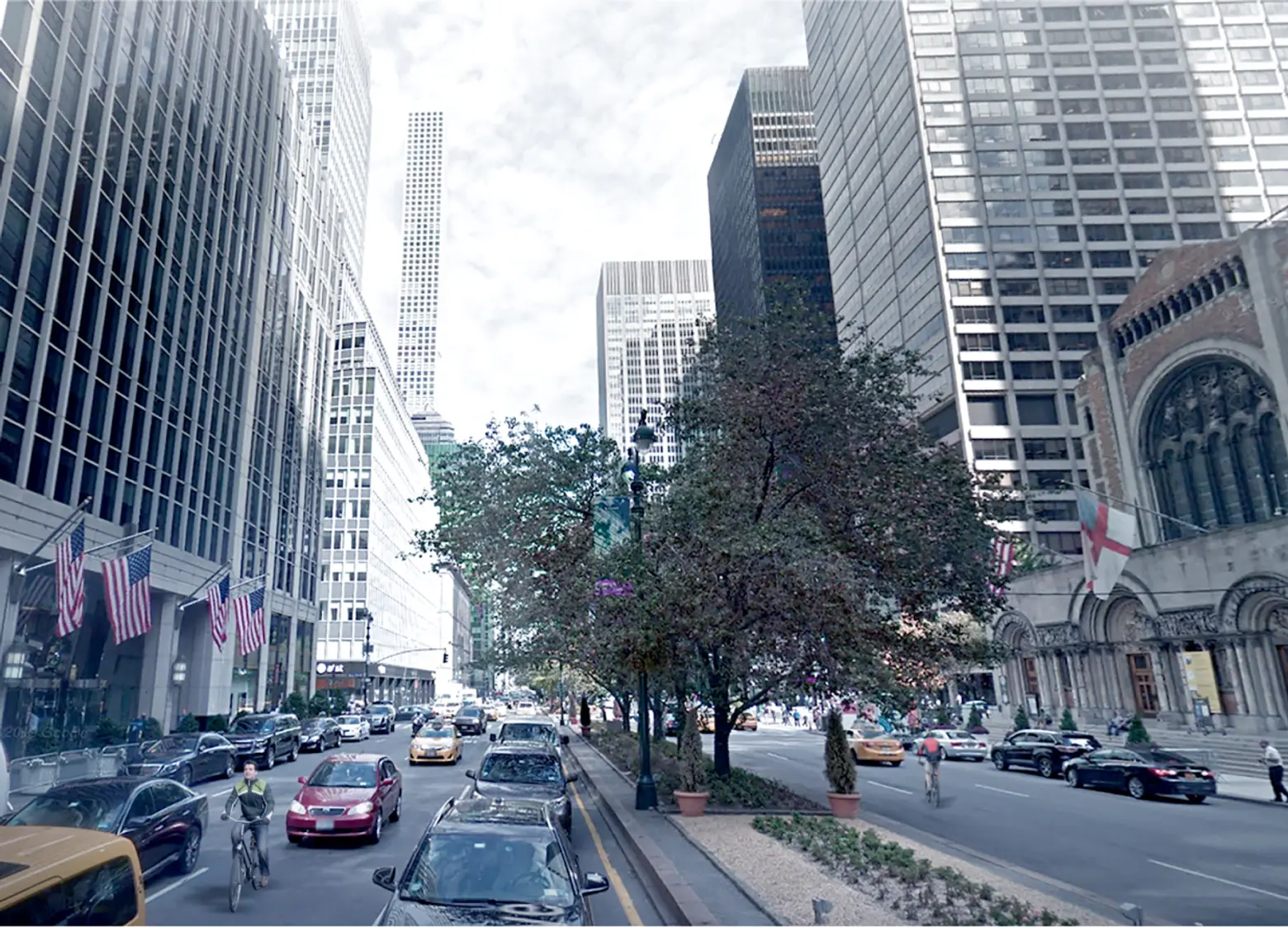
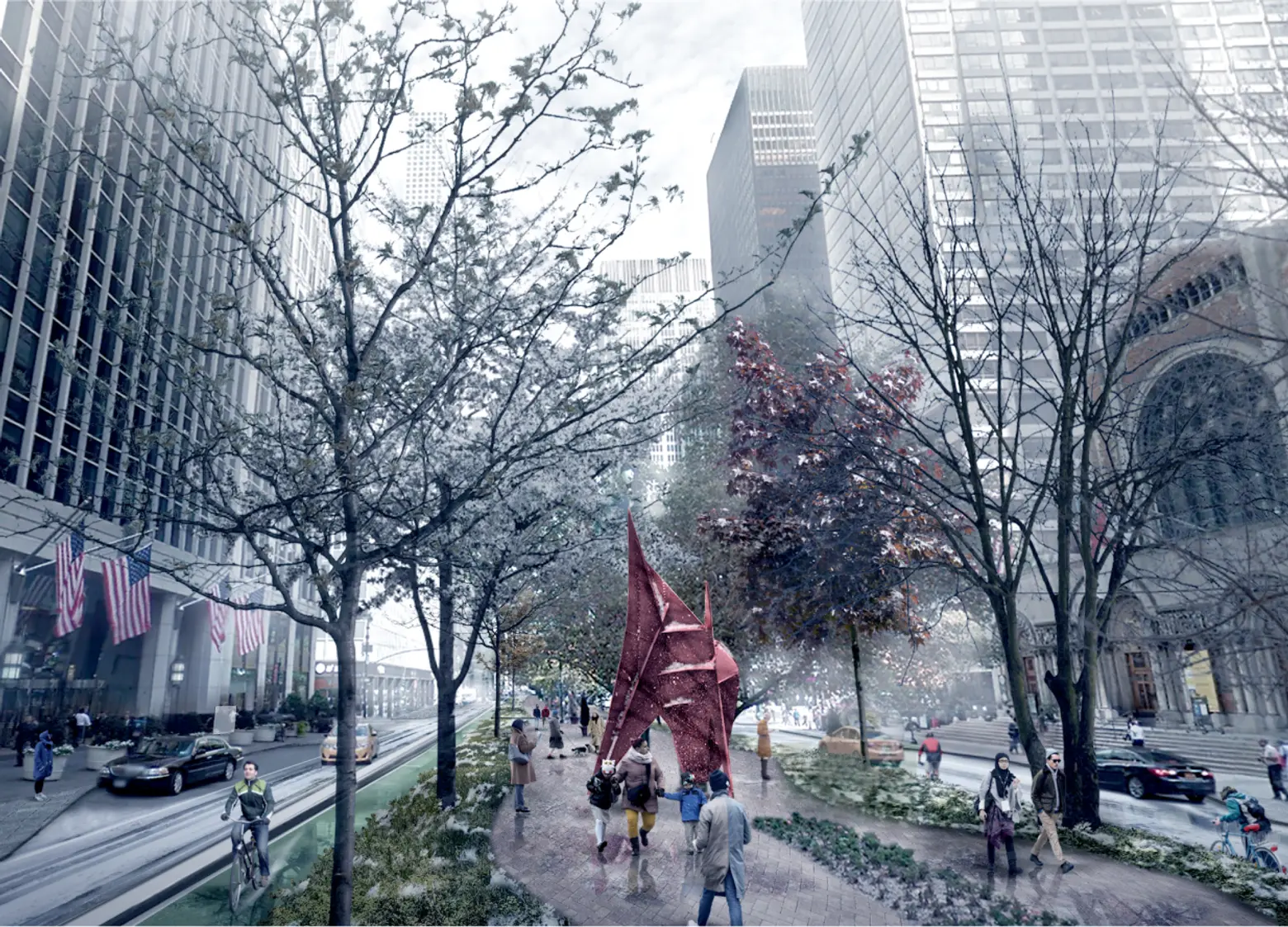
A redesigned Park Avenue could expand the median into a wide pedestrian promenade; rendering courtesy of PAU
The architects say the change would create a more “equitable, ecological, and enjoyable” city that could recover from the current crises because “as our proposal illustrates, our streets would engender fairer health outcomes, better climate resilience, responsible waste management, and faster, more pleasant commutes for essential workers who today must compete for invaluable space on our clogged regional arterials with those wealthy enough to drive into and within Manhattan,” PAU writes.
Plus, the architects argue, freed up street space could lend itself to helpful community uses like trash receptacles, which could remove the huge piles of trash currently taking up space on the sidewalks. And more crosswalks located in the middle of blocks could make it easier for pedestrians to safely cross streets.
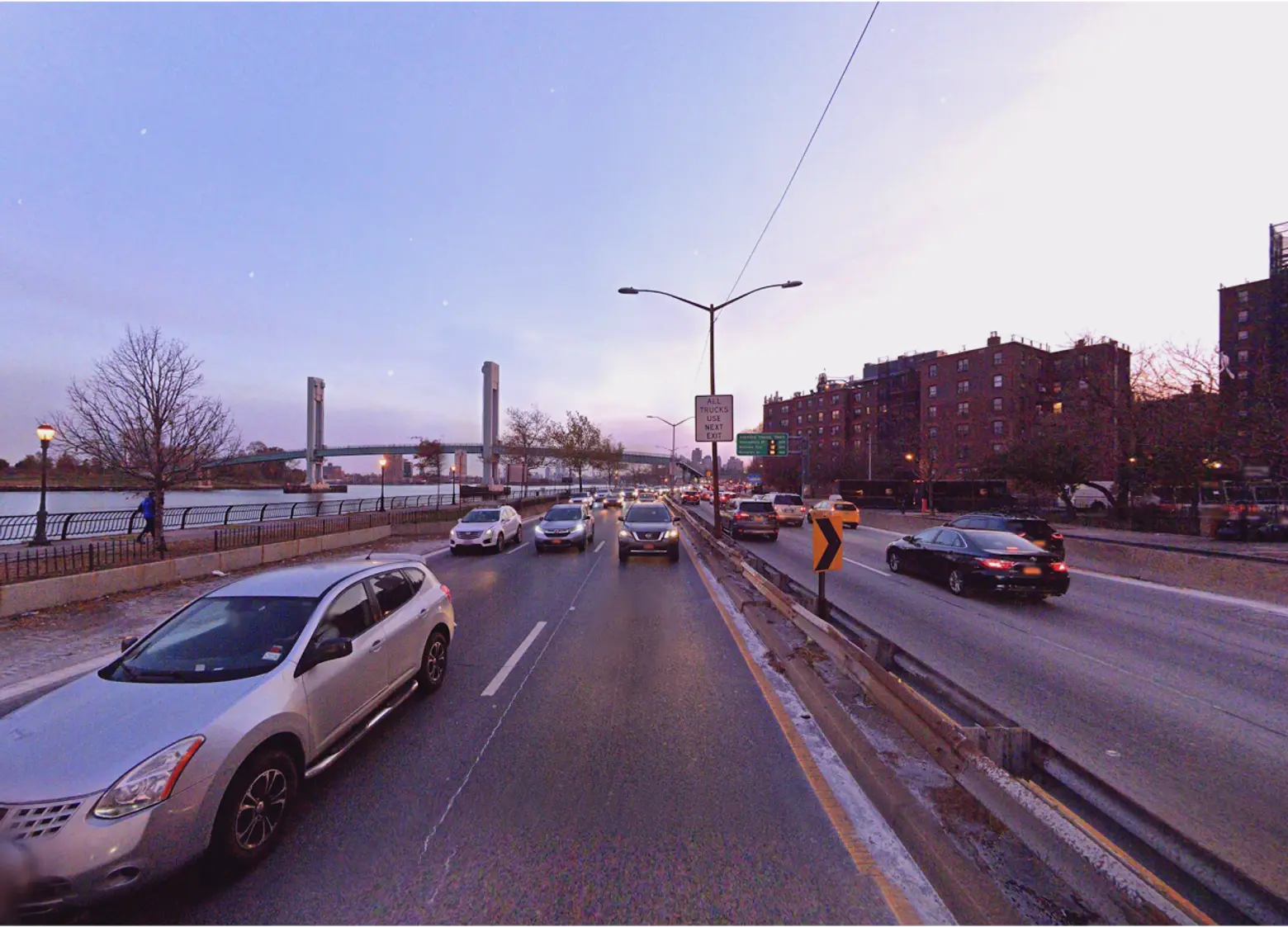
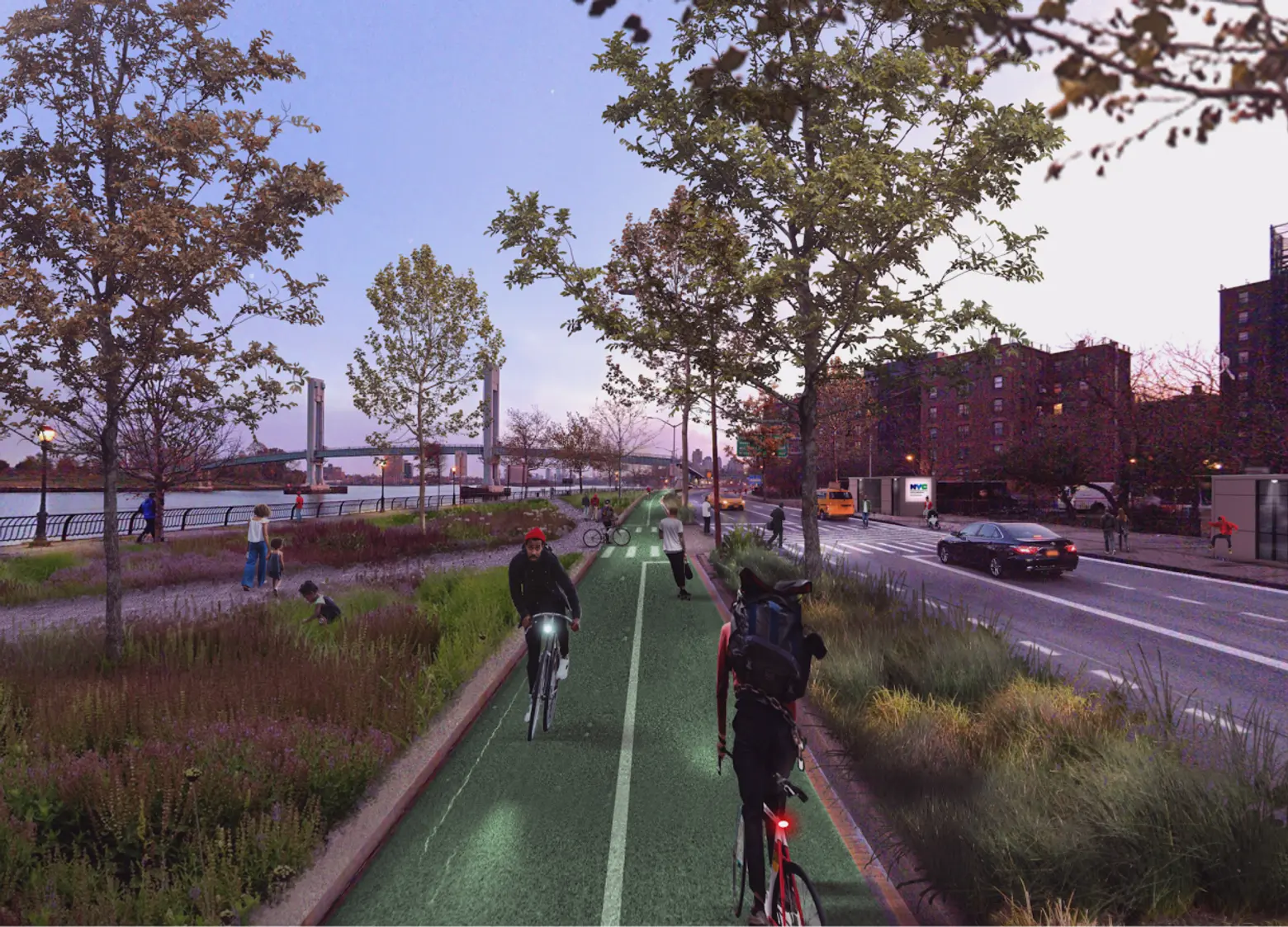
PAU proposes expanding the greenway that runs along FDR Drive to connect it to the greenway on the west side, creating a pedestrian path around the island’s perimeter.
Two-way bikes lanes, protected by concrete barriers, could replace car lanes in both directions, under the plan, with dedicated bus lanes that could take commuters in and out of Manhattan more efficiently while also eliminating crowds on the subway.
According to PAU, banning private cars in Manhattan could decrease traffic by 60 percent in the borough, resulting in faster commutes for those traveling from the outer boroughs to Manhattan.
Under the plan, local communities and residents would decide how to use the newly freed space, whether it involves new curbside vendors, civic space, public art installations, or social services. PAU says these could include homeless outreach stations, employment center, bike repair shops, small libraries, Pre-K facilities, and amenities like public seating areas and public bathrooms.
RELATED:
- NYC will now have 67 miles of open streets, the most in the U.S.
- New report calls for a 425-mile protected bikeway that would connect NYC’s five boroughs
- NYC makes 14th Street busway permanent, adds five more car-free routes
All images courtesy of PAU
